

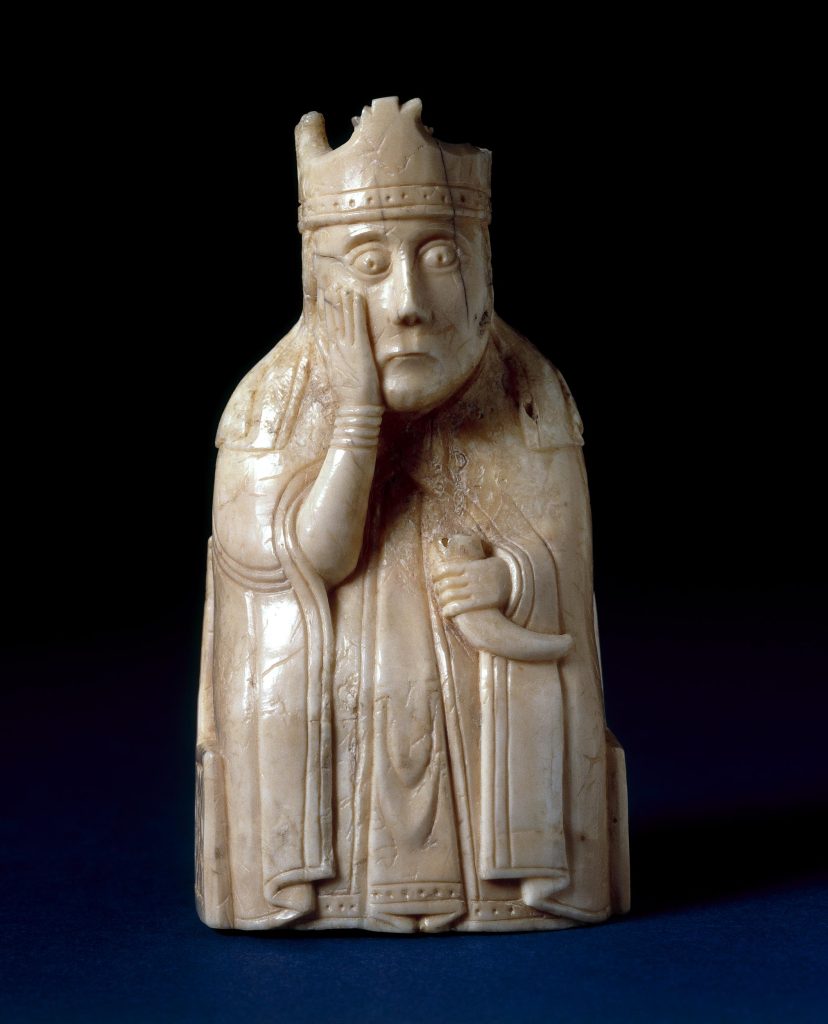
Modern study of medieval iconography inevitably entails grappling with exceptions and the rupture of expectations. No sooner might scholars settle on an expected visual formula—Cain killing Abel with his farmer’s hoe, Saint George riding his snowy steed—than we’re pulled up by an image that flouts those rules. In the fifteenth-century Alba Bible, Cain sinks his teeth directly into his brother’s neck, arguably in reference to Jewish exegesis, while in some Byzantine and post-Byzantine icons of St. George, a small boy carrying a cup rides with the saint, inspiring a semi-serious modern tradition concerning George’s love of coffee. Other iconographic traditions seem to emerge out of the blue, as did the distinctive type known as the Virgin of Humility, which flowered suddenly in Mediterranean cities in the 1340s. Such unruly iconographies both intrigue and disappoint us: they engage yet disobey our expectations, and we are left to wonder why.
The culprit in such cases is less often a rogue medieval work of art than the rigidity of modern scholarship. Despite ample evidence to the contrary, the assumption that medieval iconographic norms were formulaic, authoritative, and above all universally obeyed still shapes the way modern scholars analyze the imagery they study. Even after the poststructuralist turn, art historians have continued to wrestle with expectations deeply embedded in the discipline: that medieval artists preferred to copy or turn to text rather than to innovate; that unprecedented iconography must be based on a lost original; that patrons or learned advisors must have directed artists’ work; that traditions translated smoothly across media, formats, and contexts; that all viewers read and understood the images they saw in the same way. Underlying many of these assumptions has been a wider one: that the ideas of greatest value must be tracked to artists rooted in cosmopolitan centers, rather than to artists and works of art that circulated freely throughout their peripheries.
The conference “Unruly Iconographies? Examining the Unexpected in Medieval Art” aims to open a new conversation about medieval images that don’t follow the rules. We call for papers, drawn from any area of the medieval world broadly defined, that ask both speakers and audience to rethink the unspoken paradigms that have decided which iconographic motifs are canonical and which are “singular,” “exceptional,” or even “mistakes.” At the broadest level, we seek to problematize the binaries on which these paradigms were founded: tradition versus invention, canon versus exception, and center versus periphery. At a more specific one, we invite deeply researched case studies whose particularities can lead scholars to a more effective, contextually sensitive, and historically informed approach to the study of images and image-making in the Middle Ages.
“Unruly Iconographies?” will take place on November 9, 2024 at the Index of Medieval Art at Princeton University, following the Weitzmann Lecture by Dr. Brigitte Buettner, held on November 8 and hosted by Princeton’s Department of Art & Archaeology. It also will constitute the first of two internationally linked events, the second of which will be a site-based seminar at the Center for the Art and Architectural History of Port Cities “La Capraia” in Naples in June 2025. Whereas the Index conference will consider broadly disciplinary questions about methodology, theory, and models, the Naples conference, hoped to be the first of several site-based conferences of this kind, takes southern Italy as a laboratory for exploring the relationships between iconography and place within a geographically expanded Middle Ages, focusing on the potentials and limits of the study of iconography in southern Italy. Details about this conference will be available in Summer 2024.
Submissions for the Princeton-based conference are invited by April 1, 2024. They should include a one-page abstract and c.v. and be sent to fionab@princeton.edu. Travel and hotel costs for the eight selected speakers will be covered by the Index. Speakers will be informed of their selection no later than May 1, 2024.
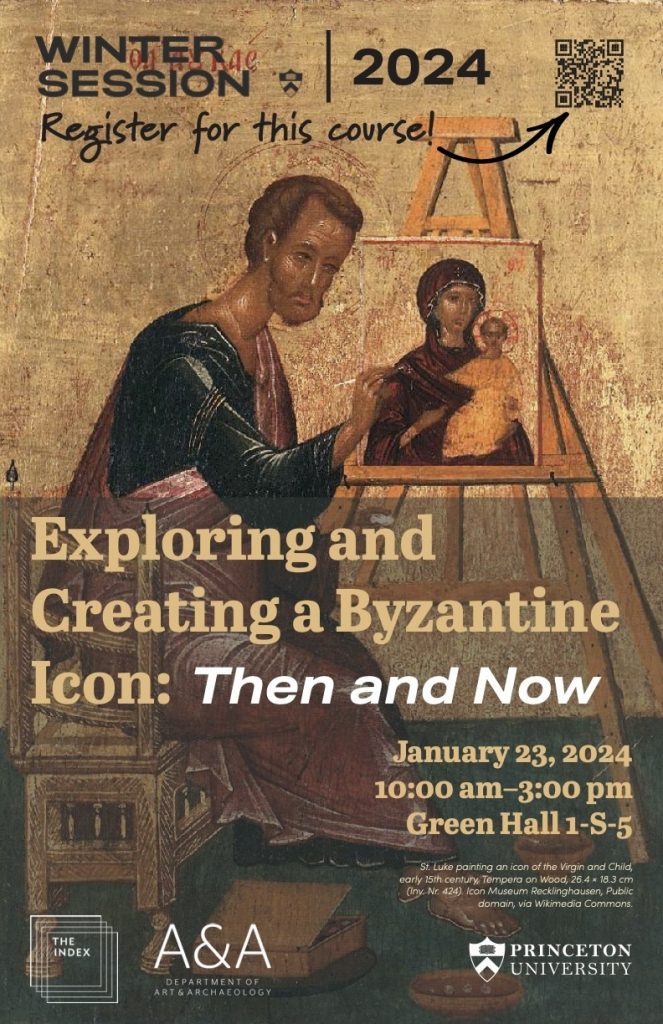
The Index of Medieval Art was delighted to offer its second Wintersession, “Exploring and Creating a Byzantine Icon: Then and Now,” on January 23rd, 2024. Its fifteen participants included Princeton staff, faculty, undergraduate and graduate students. In the first part of the workshop, they learned about the history and creation of Byzantine icons. In the second, they had the opportunity to create their own icons using modern artistic materials.
Index Art History Specialists Maria Alessia Rossi and Jessica Savage led the workshop, opening with a presentation on the Index resources and delving into some questions about iconography using large reproductions of the icons from Mount Sinai, generously loaned by Visual Resources, as a basis. The group discussed the iconographic details in works of art, exploring the subject matter in icons that generate tags in the Index database. Jessica invited the students to observe the figures and scene in a twelfth-century Sinai icon of the Annunciation (Index system no. 57527), looking for major and minor details in the painting, as small as an octopus swimming underwater. Alessia introduced participants to the way Byzantine icons were displayed and their devotional practices by examining a folio from the Hamilton Greek Psalter (Index system no. 103381).
The first guest lecturer, local icon painter Maureen McCormick, showed the participants how to make the binder for egg tempera paint by mixing egg yolk and … No, not water … rather, white wine! Maureen showed the class all the tricks of the icon painter, including where to buy authentic pigments, how to grind them, and how to literally use one’s breath to “blow” gold leaf onto a red clay bole sample, which formed the nimbus of a saint. A short Instagram reel was made by Kirstin Ohrt, Communications Specialist in the Department of Art & Archaeology, to show Maureen’s breathtaking lesson in action, and you can check it out here: https://www.instagram.com/artandarchaeologyprinceton/reel/C2ud3gZLAJW/.
The afternoon session was led by Department of Art & Archaeology graduate student and icon painter, Megan Coates, who spoke about her own work with icons, as well as their importance for memory and communication. As part of an organized hands-on activity, participants created their own Byzantine icons using templates designed by Megan or choosing their own models from books or memory. Acrylic paint, brushes, drawing materials, gessoed panels, as well as gold and silver leaf materials were supplied by the Princeton Office of Campus Engagement. The outcomes were astonishing!
It was a pleasure to observe the participant’s ideas and skillful process unfold as they engaged in the long-treasured art of icon-making. One participant Sigrid Adriaenssens, Professor of Civil and Environmental Engineering, wrote to us after Wintersession and said, “Thank you so much for organizing this workshop. It opened a whole new world to me that I didn’t know existed at Princeton. I really enjoyed learning about the Index, icons, and how they are made. The speakers Maureen and Megan were also very interesting and exciting to listen to!” Another participant, Zi (Zoe) Wang, visiting doctoral candidate and researcher at Princeton from the Central Academy of Fine Arts in Beijing, said she felt transported by the instrumental music we played during the hands-on activity. Zoe said about the experience, it was like “immersing myself in meditation.” We couldn’t agree more!
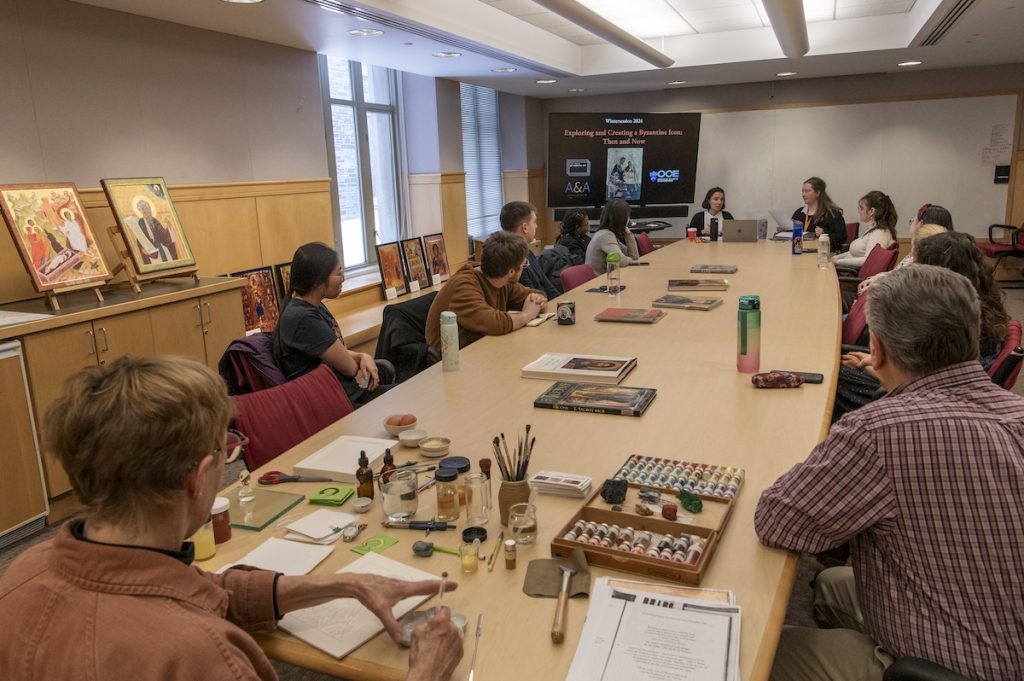
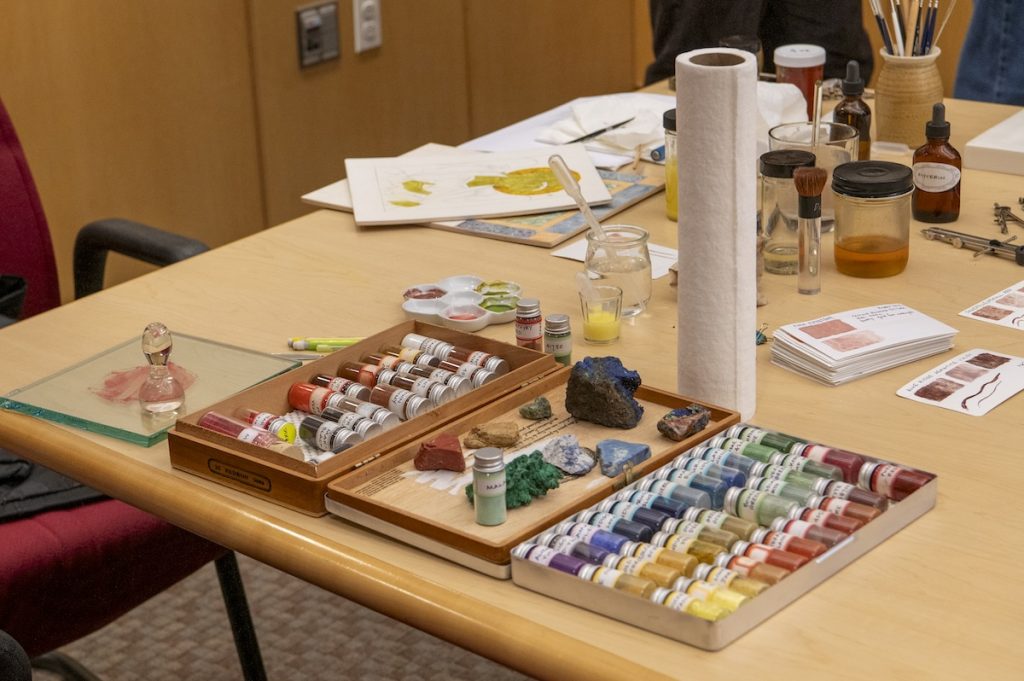
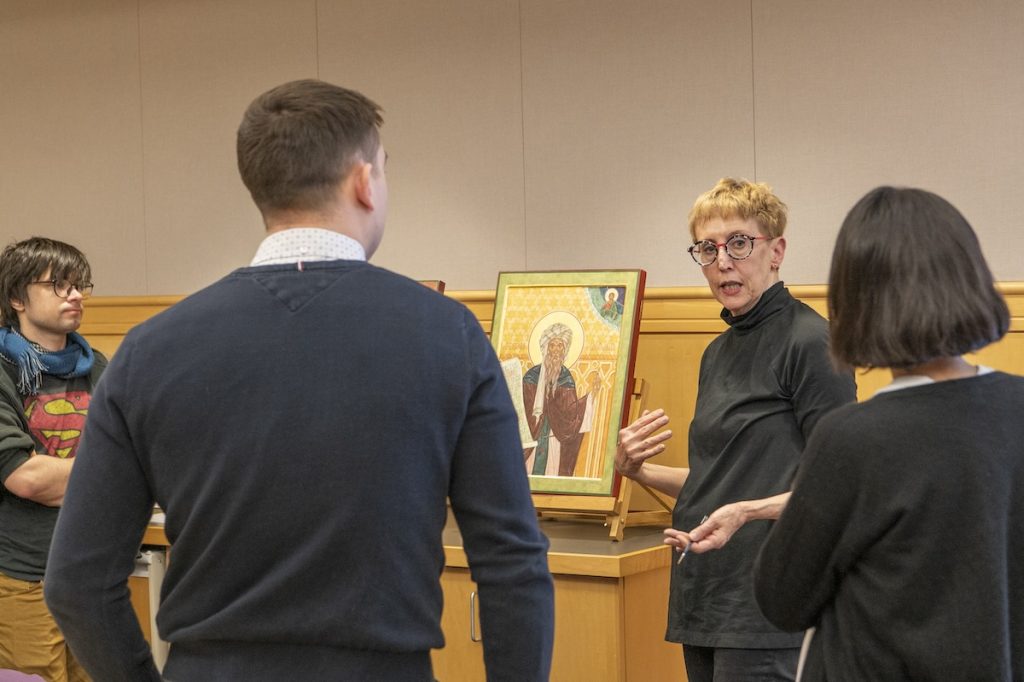

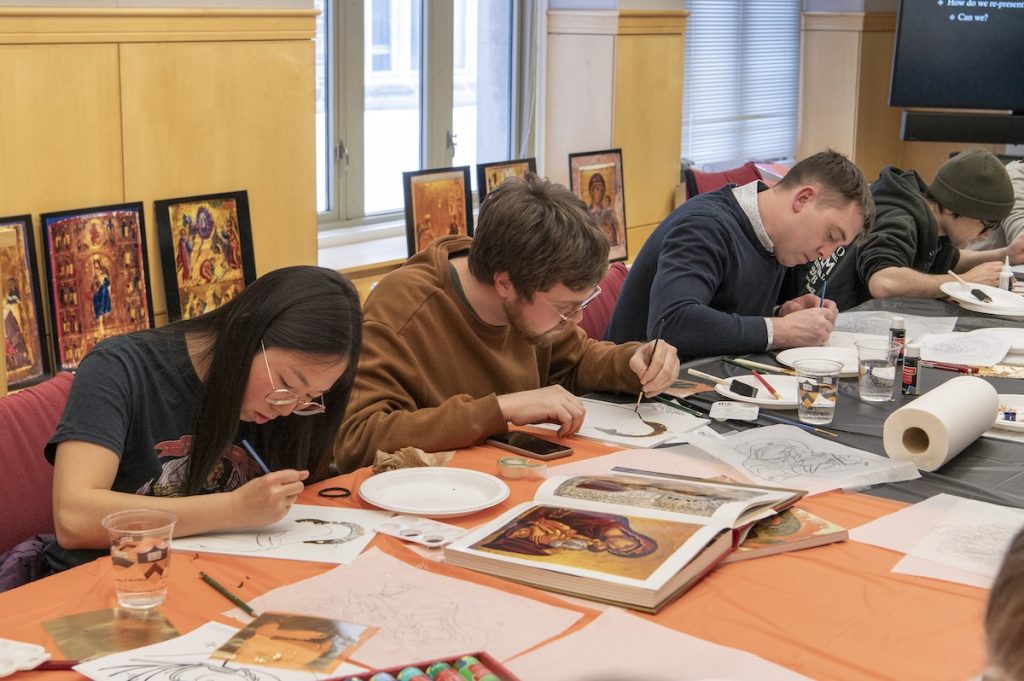
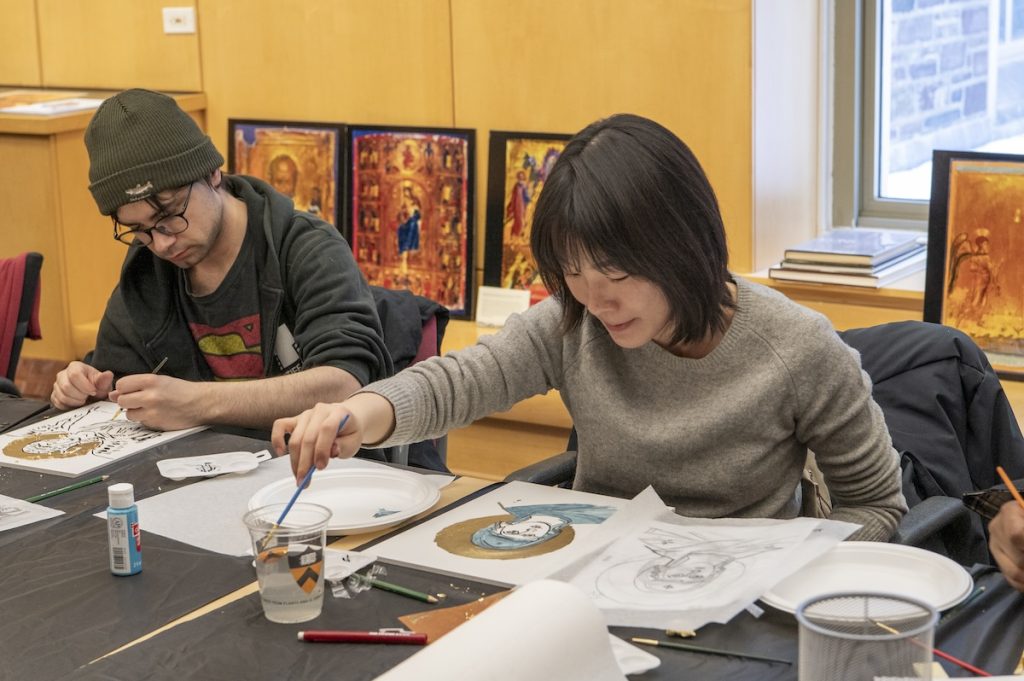
Are you interested in learning more and researching icons at the Index? Here are some general tips for starting an Index search about Byzantine icons, especially if you do not know exactly which icon you are looking for!
However, these results might be too broad, so if you want to refine them you can keyword search the word “Byzantine” on the upper right search window of the database, and then filter by these other controlled terms we just mentioned, such as Work of Art Type “panel” or Medium “wood.” But if you want even narrower results, or if you know the iconography you are interested in, such as the iconography of an angel, or searching for angels by name, as in the case with the Annunciation image, you can filter by the Subject “Gabriel the Archangel.”
If you have any questions about starting research with the Index resources, fill out our inquiry form and we will be in touch: https://ima.princeton.edu/research-inquiries/.
Finally, this Wintersession workshop could not have been possible without the generous support of the Princeton Office of Campus Engagement, the Department of Art & Archaeology, and the Index of Medieval Art. Thank you to all who helped plan and participated in this event!